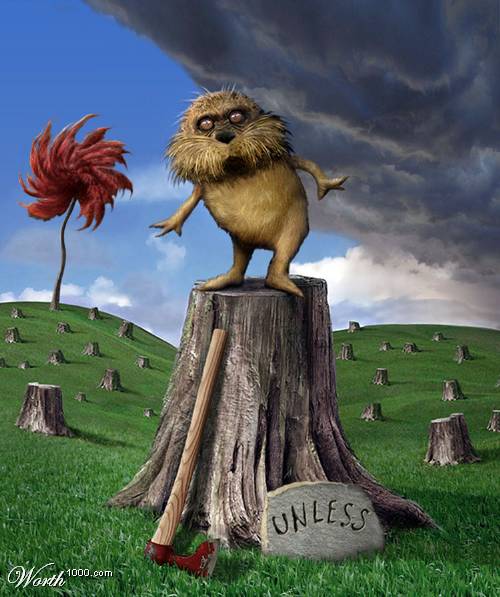In the whimsical world of Dr. Seuss, the Lorax stands as a symbol of environmentalism and the voice of nature. However, as our cultural narratives evolve, so too do our interpretations of these iconic characters. The “scary Lorax” emerges as a chilling reimagining, one that blends the innocent charm of the original with an eerie, unsettling vibe. This transformation not only stirs up nostalgia but also challenges our perceptions of the character and the messages he embodies.
What happens when the Lorax, who once spoke for the trees, takes on a darker persona? The scary Lorax taps into the fears surrounding environmental decay and corporate greed, emphasizing the dire consequences of neglecting our natural world. This article delves into the layers of this terrifying reinterpretation, examining how it reflects contemporary issues and resonates with audiences on a deeper level.
As we explore the scary Lorax, we will uncover the nuances of storytelling that allow for these shifts in character. This journey aims to provide insight into how fear can be a powerful tool for advocacy and awareness, urging us to reconsider our relationship with nature. Join us as we unravel the mysteries of this haunting figure and discover what the scary Lorax tells us about ourselves and our world.
What is the Origin of the Lorax?
The Lorax first appeared in Dr. Seuss's 1971 book, serving as a guardian of the forest, speaking out against the destruction of trees and advocating for sustainability. His famous line, "I am the Lorax, I speak for the trees," has become an enduring mantra for environmentalists. The character's vibrant orange mustache and quirky demeanor made him an instant favorite among children and adults alike.
How Did the Scary Lorax Emerge?
The scary Lorax emerged from a cultural need to confront the realities of climate change and environmental destruction. As society grapples with the consequences of neglecting the planet, artists and storytellers have begun to reinterpret familiar characters through a more sinister lens. This transformation serves to evoke fear and urgency, compelling audiences to take action.
What Are the Themes of the Scary Lorax?
- Environmental Decay: The scary Lorax illustrates the potential outcomes of continued pollution and deforestation.
- Corporate Greed: The character embodies the consequences of prioritizing profit over the planet.
- Fear as Motivation: By invoking fear, the scary Lorax prompts action and dialogue about environmental responsibility.
- Reclamation of Nature: The story often concludes with a message about the importance of protecting and restoring our natural world.
What Is the Cultural Impact of the Scary Lorax?
The cultural impact of the scary Lorax is significant, as it reflects a broader societal shift towards recognizing the urgency of climate action. This character has inspired various forms of media, including art, literature, and film, allowing for discussions around environmental issues to flourish. By reimagining beloved characters in darker tones, creators challenge audiences to confront uncomfortable truths and consider their roles in fostering a sustainable future.
How Does the Scary Lorax Compare to Other Dark Reimaginings?
In recent years, many beloved characters have undergone dark transformations. For instance, classic fairy tales often feature grim interpretations that highlight moral lessons or societal issues. The scary Lorax fits into this trend, utilizing fear to communicate the consequences of human actions. This method allows for a more profound engagement with audiences, prompting them to reflect on their behaviors and beliefs.
What Can We Learn from the Scary Lorax?
The scary Lorax serves as a cautionary tale, emphasizing the importance of environmental stewardship. His haunting presence reminds us that our actions have repercussions, urging us to be proactive in protecting our planet. By embracing this darker narrative, we can foster a greater understanding of the challenges we face and inspire collective action towards a more sustainable future.
Can the Scary Lorax Inspire Change?
Yes, the scary Lorax has the potential to inspire change by resonating with audiences on an emotional level. Fear can be a strong motivator, driving individuals and communities to take action. By presenting the consequences of environmental neglect in a compelling way, the scary Lorax encourages people to engage with the issues at hand and advocate for positive change.
What Role Does Storytelling Play in Environmental Advocacy?
Storytelling is a powerful tool in environmental advocacy, as it allows for the exploration of complex issues in relatable ways. The scary Lorax exemplifies how narratives can evoke emotions and spark conversations about urgent topics. By weaving fear into familiar tales, storytellers can capture attention and inspire audiences to reflect on their responsibilities towards the planet.
How Can We Embrace the Lessons of the Scary Lorax?
To embrace the lessons of the scary Lorax, we must first acknowledge the importance of environmental stewardship. This involves:
- Educating ourselves and others about environmental issues.
- Advocating for sustainable practices in our communities.
- Supporting policies that prioritize the protection of natural resources.
- Being mindful of our consumption and lifestyle choices.
By embodying the lessons of the scary Lorax, we can work together to create a healthier, more sustainable world for future generations.
Conclusion: The Legacy of the Scary Lorax
The scary Lorax stands as a testament to the power of storytelling in addressing critical social issues. By reinterpreting a beloved character through a darker lens, we are reminded of the urgent need for environmental awareness and action. This haunting figure not only serves as a cautionary symbol but also inspires hope for a brighter, more sustainable future. As we navigate the complexities of modern life, let us carry the lessons of the scary Lorax with us, ensuring that we speak for the trees and the planet we call home.




